
For some time now, I’ve considered migrating my gaming backlog to an online management tool. Based on feature set, I’m currently leaning towards Infinite Backlog, although it’s certainly not the only available option. Presently I manage a sizable backlog of unplayed games by means of an Excel spreadsheet, a method just as old and outmoded as most of the games I play (old and outmoded? c’est moi, baby!). So when I can’t decide what game to play, I find the tallest column in the spreadsheet (generally by platform or by series) and then load up the topmost entry. And so it was I once again found myself staring down the ‘Backlog – Series’ tab in my trusty old spreadsheet. This time the tallest column was … well, the tallest column was Ultima, but the older I get the more I realize “I’m supposed to” enjoy the Ultima series more than I ever actually have in reality … so I kept on looking (note to self: consider removing the Ultima series from backlog). Surprisingly the second tallest column was … Sega’s venerable Shining series. I’ve certainly always loved both the original Stephen King novel, as well Stanley Kubrick’s cinematic adaptation, so I was super curious to see how Sega handled the source material. Was Shining in the Darkness an Overlooked classic or was it … all work and no play? Only one way to find out! … Here’s Johnny!
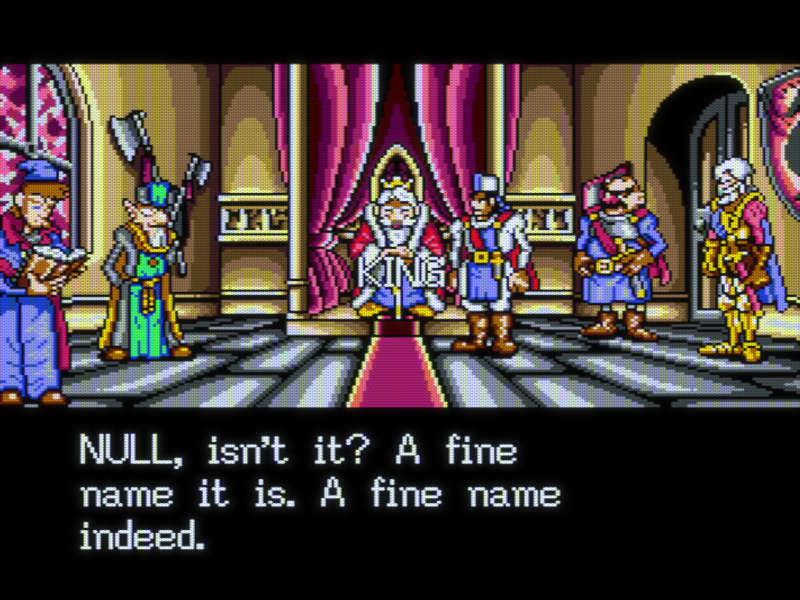
I jest of course, although an Overlook Hotel/hedge maze-based dungeon crawler pulled from the story of The Shining would be absolutely f’kn epic (“Great party, isn’t it!?”). Shining in the Darkness is undoubtedly a dungeon crawler to the core, but for better or worse, the setting is far more pedestrian. Run-of-the-mill sword and sorcery tropes are what’s on the menu, and Shining in the Darkness dutifully serves them up for the entire meal. If you’re hoping for some interesting twists or subversion of the formula, well that’s not really what this game is going for. That being said, we’re not yet fully in the era where “subverting genre norms” became de rigueur, so I can’t really knock SitD too seriously on these grounds. And the story is actually pretty decent for this time period, with some great JRPG-style plot twists thrown in for good measure. It all unfolds in the vaguely Arthurian Kingdom of Thornwood, where the King’s daughter Jessa has gone missing, along with the hero’s father, noble Sir Mortred. You play as a young knight in training tasked with rescuing Jessa and Sir Mortred, finding the Armaments of Light, and eventually defeating the evil Sorcerer Dark Sol. In due course all these hanging plot threads become satisfactorily intertwined, punctuated along the way with illuminating reveals and nefarious betrayals. Early on in your quest you are joined by two trusty companions. Milo the Hobbit (literally named ‘Bilbo’ in the Japanese version of the game) is basically a Cleric (minus the piety), and is adept as both a healer and fighter. Pyra the Elf specializes in offensive magic, and rounds out the party.
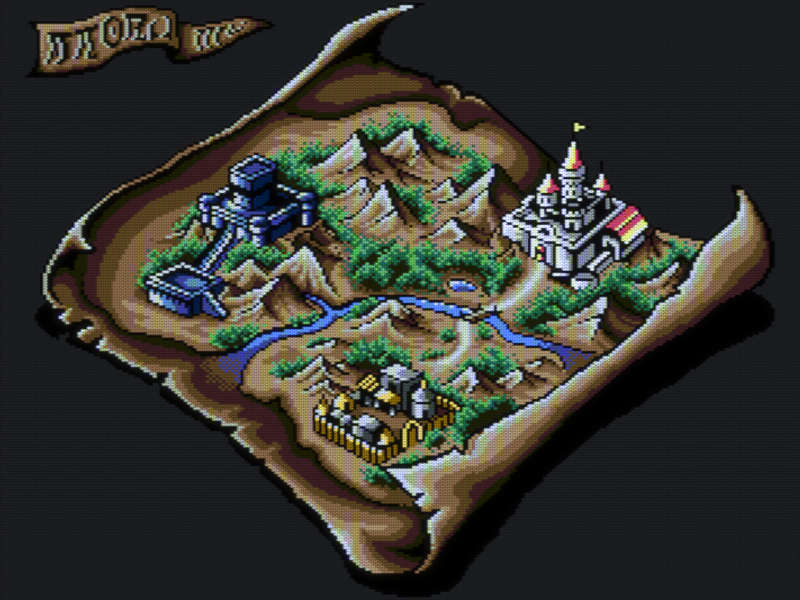
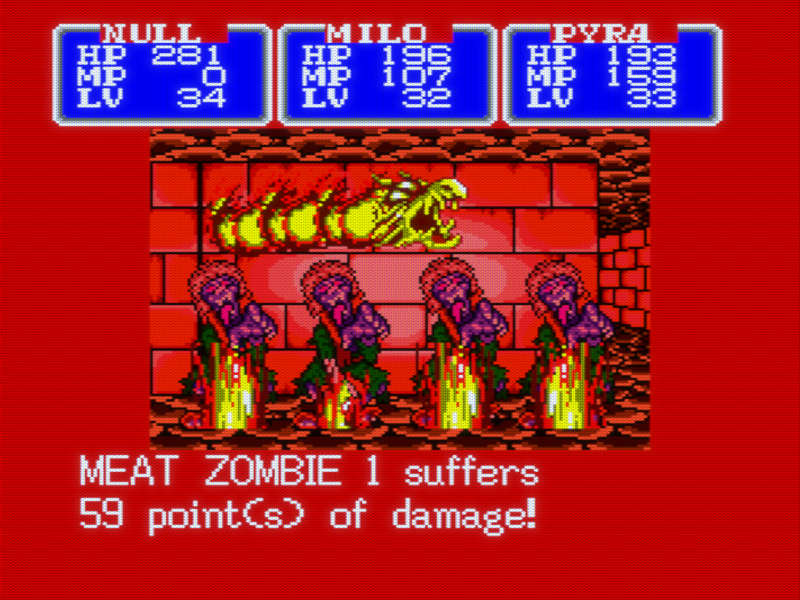
For the purposes of Shining in the Darkness, the diminutive Kingdom of Thornwood consists entirely of three locations, those being Thornwood Castle, where the King holds court and advances the plot as necessary, Thornwood Village, home to various merchants, an Inn, as well as a Shrine and … “The Labyrinth” where 95% of the game takes place. As the absolute largest and most noteworthy structure in all of Thornwood, it’s a bit of a mystery why the King’s cartographers didn’t also append “Thornwood” to the name of The Labyrinth, but I guess the minds of 16-bit cartographers are as unadorned as they are inscrutable. At any rate, what would an old school grid-based dungeon crawler be without a Labyrinth to explore? That’s a rhetorical question of course, but I suppose the answer would just be a “crawler,” and I suspect that genre wouldn’t be much fun. This brings us to the question of whether Shining in the Darkness itself can be considered “fun” in a conventional sense. And the answer is … it depends. Dungeon crawlers from this era were designed for gamers who enjoy slow and steady progression, gamers for whom the grind itself was at least half the fun. In order to get the most out of Shining in the Darkness, a diligent gamer quite likely would have mapped out each level of the Labyrinth on graph paper in order to keep things straight (and as an aside, you’ll probably want to do this even as a modern gamer, if you don’t plan on using maps available online). Of course you’ll likely only be mapping out your progress a few steps at a time due to the highly aggressive encounter rate. This is a mixed bag. In areas of the dungeon in which you’re fighting monsters with whom you’re evenly matched, this high encounter rate can be a real source of tension and exhilaration. Later in the game when you’re simply trying to traverse through earlier sections of the Labyrynth, and you’re still getting blitzed by Lvl. 1 creatures every few steps (for a whopping 3XP per encounter) … well that quickly becomes tiresome and boring. So the amount of fun you glean from Shining in the Darkness will likely boil down to whether you define the above gameplay elements as “having aged poorly” or as “charmingly nostalgic”. For me, the answer probably falls somewhere in the middle. There is a certain endearing quality to Shining in the Darkness as a relic of a bygone era. In no way was it “ahead of it’s time” (Sega had already released Phantasy Star 1-3 by the time SitD hit the shelves, and each of those games moved the JRPG genre forward in very compelling ways, including the incorporation of dungeon crawling elements). No, this game was firmly “of its time” but by that token it was unpretentiously so. You knew exactly what you were getting into with Shining in the Darkness, and that’s exactly what it proceeded to give you.
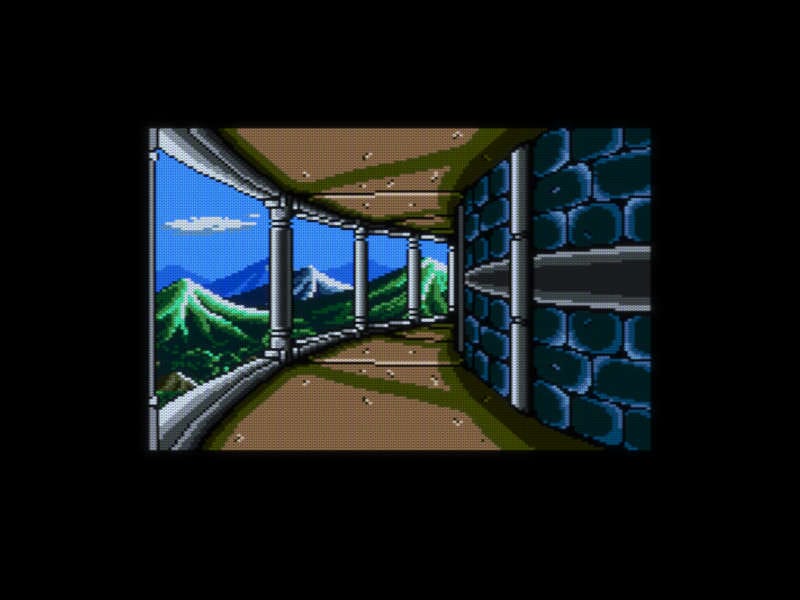
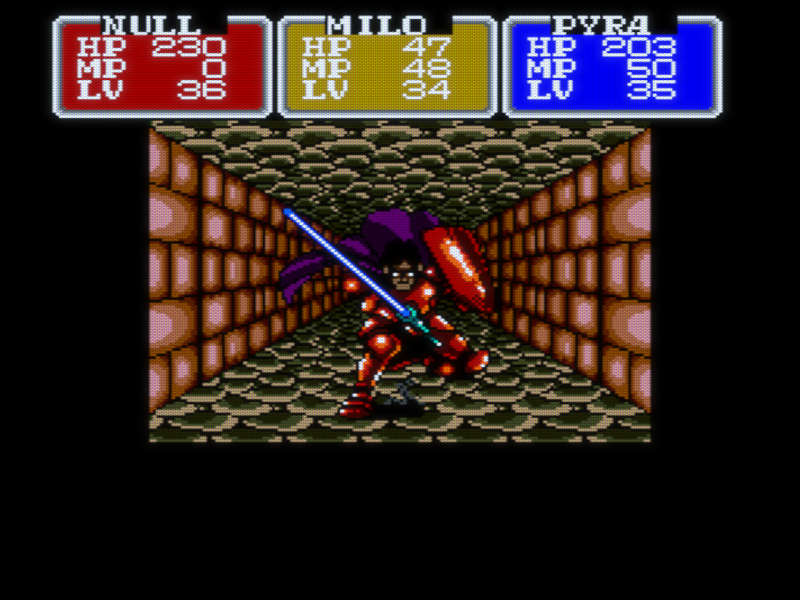
It warrants mentioning that Shining in the Darkness was the effort of a very small team of developers, and if the stories are to be believed, it was largely the work one man, Hiroyuki Takahashi. Accordingly, you can certainly see where some shortcuts that were taken. Thornwood Village is clearly just a single background graphic that simply pans horizontally to the right or left as you “navigate” through town. None of the characters are animated, and monster animations are both minimal and sparingly used. All that being said, the sprite work itself is expressive and full of character. Likewise the music, while eventually quite repetitive (which is basically the nature of the beast for games like this), is fairly catchy and well executed.
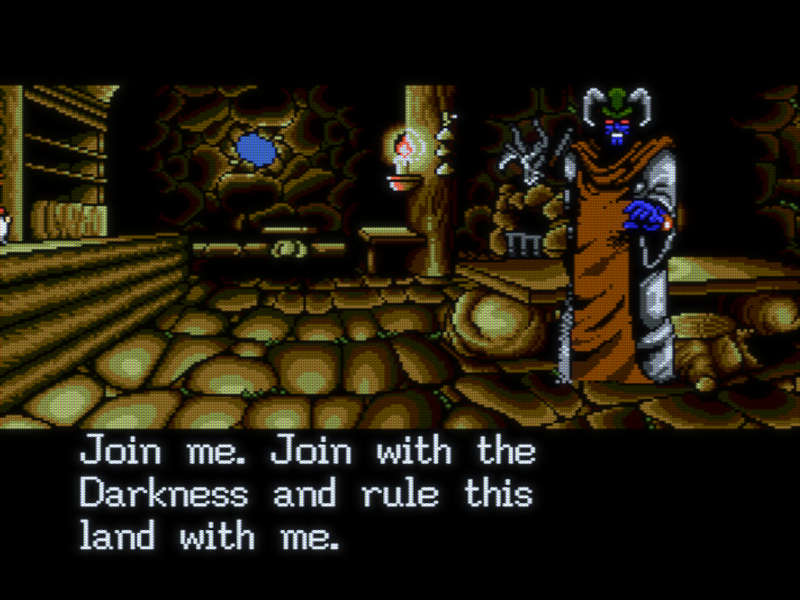
You can probably already see from the above that this is all leading up to one of my patented ‘conditional recommendations’. And this time that condition all depends on how much time and patience you have for the old-school dungeon crawling mindset. If what I’ve described thus far sounds like a tedious exercise in boredom, Shining in the Darkness probably isn’t going to convince you otherwise. If, on the other hand, you pine for the simple charms that this style of gaming provides, Shining in the Darkness won’t let you down (though notably it won’t blow your mind either).
Discovery: 7 Handeaters out of 10 treasure chests.
Leave a Reply